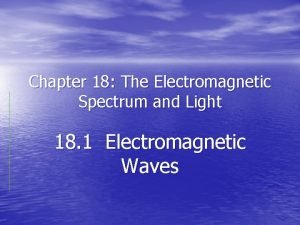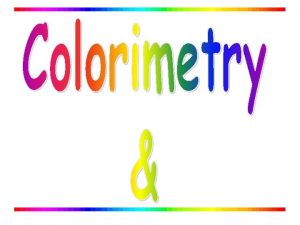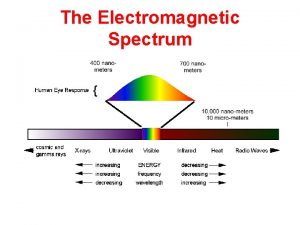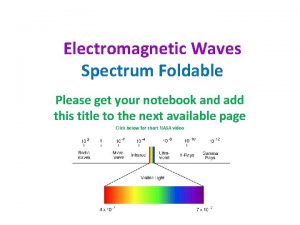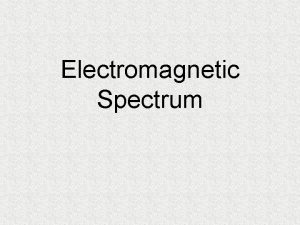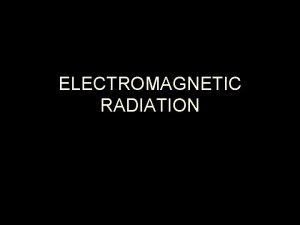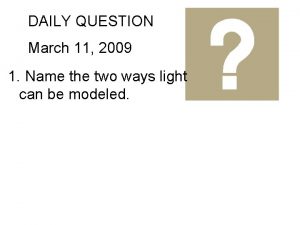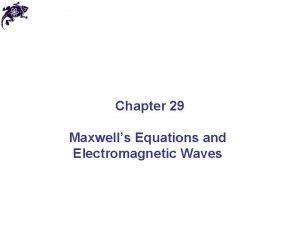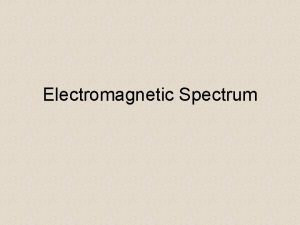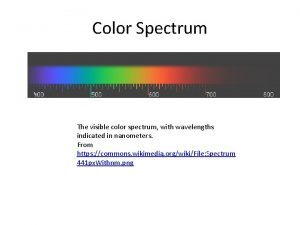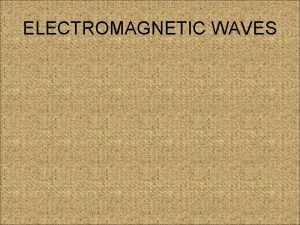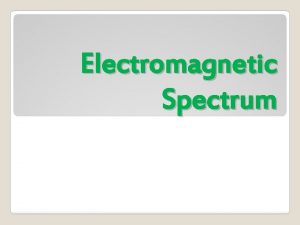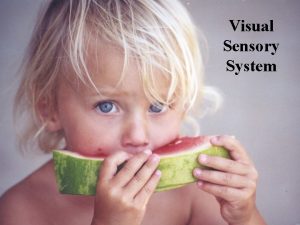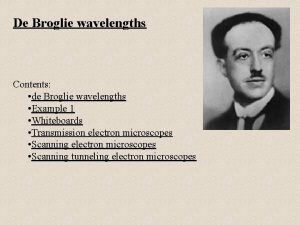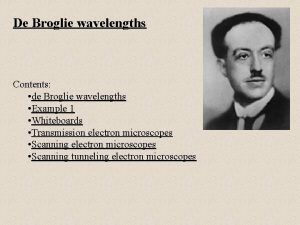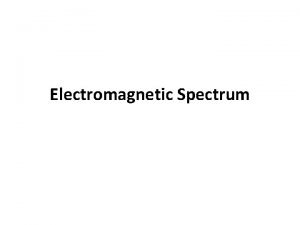Color Perception CHAPTER 6 Wavelengths Visual spectrum Electromagnetic












- Slides: 12

Color Perception CHAPTER 6

Wavelengths Visual spectrum Electromagnetic radiation Range of energy visible to humans falls between 400 and 750 nm

Red eye– light being absorbed in the back of the eye– good for visual acuity Snakes see in infrared– heat Night vision– light enhancement Thermal imaging– pseudocolor Blacklight– ultraviolet light– always purple because at end of visual light spectrum– phosphors absorb and release in laundry detergent/teeth/blood Mantis shrimp has 12 cones

Wavelengths Heterochromatic light- white light Monochromatic light- one wavelength Spectral reflectance- the ratio of light reflected by an object at each wavelength Tetrachromats- four cones– usually female– see a more distinct spectrum of red

Visual Principles Hue- the quality of a color – color is an opinion (the difference) Saturation- the purity of light Brightness- the intensity of light Lightness- the psychological experience of the amount of light that gets reflected by a surface– black and white spectrum

Color Mixing Additive color mixing- adding one wavelength of light to another All colors make white Pointillism- uses both additive and subtractive color mixing simultaneously George Seurat – completely make out of RGBWB paint Subtractive color mixing- removing one wavelength of light Metameric color- matching experiments A psychophysical color match between two patches of light that have different sets of wavelengths

The Retina Cones-- color High visual acuity Color is much more rick in foveal vision At least two cone types are needed for color vision Univariance Scotopic Vision

Retina S- cone : blue – 420 nm M-cone: green – 535 nm L- cone: red – 565 nm

Trichromatic Theory - Trichromatic theory of color vision- color is determined by the relative activation and output of the three types of cones - Thomas Young - Herman Von Helmholtz

The Opponent Process Theory Opponent-process theory of color vision- color is determined by three oponent mechanisms Ewald Hering Red-green Blue-yellow Color Combinations color wheel Perceptual grouping Afterimages Simultaneous color contrast flag Surrounding green square with red: brain perceives green as more rich Hue Cancellation

The opponent process theory Antagonistic center-surround receptive fields Color RGCs LGN cells V 1 Cone opponent cells- LGN neurons excited by the input from one cone type in the center but inhibited by the input from another cone type in the surround – ex: short being surrounded by medium and long Color Opponent cells- V 1 neurons that are excited by one color in the center and inhibited by another color in the surround Red- green Blue-yellow

Double opponent cells- V 1 cells that have a center, which is excited by one color and inhibited by the other; in the surround, the pattern is reversed Color edge detectors
 Emf spectrum
Emf spectrum Chapter 18 the electromagnetic spectrum and light
Chapter 18 the electromagnetic spectrum and light Color wavelengths
Color wavelengths Line value shape, form, space, texture and color
Line value shape, form, space, texture and color What is the shortest electromagnetic wavelength
What is the shortest electromagnetic wavelength Waves produced by stars and galaxies
Waves produced by stars and galaxies Radio waves microwaves song
Radio waves microwaves song Electromagnetic spectrum foldable
Electromagnetic spectrum foldable Longest to shortest wavelength
Longest to shortest wavelength Electromagnetic spectrum micrometers
Electromagnetic spectrum micrometers Electromagnetic spectrum mnemonic
Electromagnetic spectrum mnemonic Electromagnetic spectrum foldable
Electromagnetic spectrum foldable Maxwell theory
Maxwell theory

